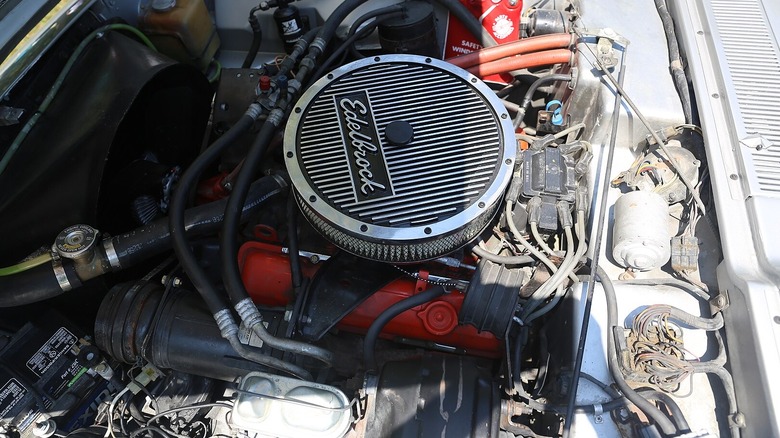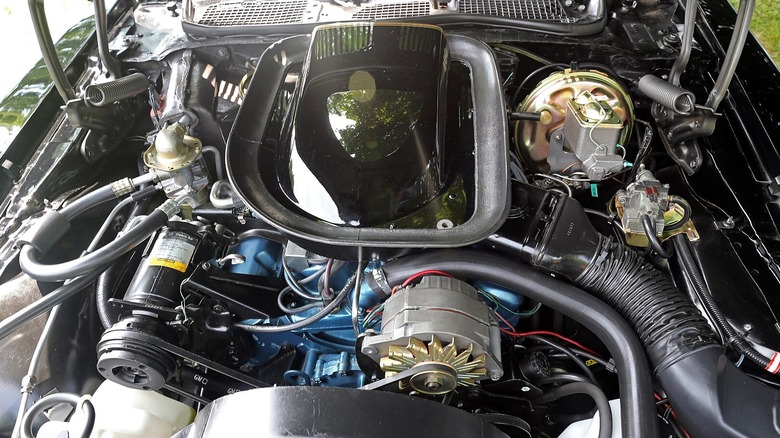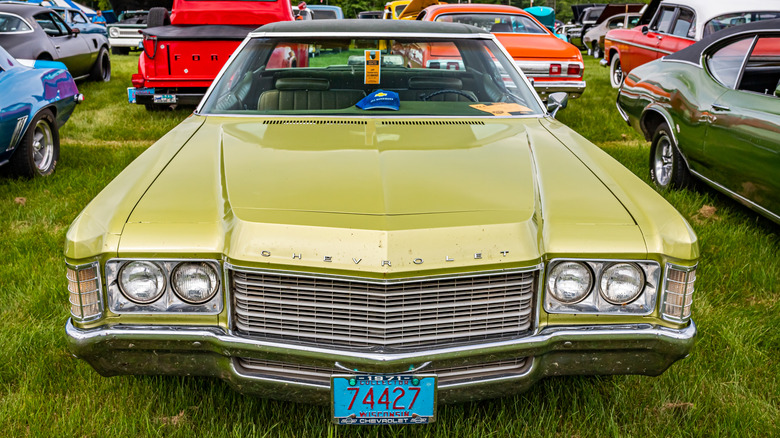Pontiac 400 Vs Chevrolet 400: How Do The Two Engines Compare?
When General Motors divisions started building V-8 engines for their cars in the early to mid-1950s, each division had its own line of engines. As a result, engines of the same displacement sometimes appeared in different marques.
One example is that 400 cubic-inch V-8s were produced by both Pontiac and Chevrolet. These engines are so different that they're not even the same size. The Pontiac 400 was 25.5 inches wide, 32 inches long, and 30 inches high, while the Chevrolet 400 was the largest of its small-block series. These engines were 26 inches wide, 28 inches long, and 27 inches high. Horsepower differed as well. In short, the Pontiac 400 cubic inch was developed as a high-performance engine that produced up to 370 hp in its Ram Air IV form in the late 1960s. Chevrolet's top performer of similar size was the large-block 396 cubic-inch V-8, which could run up to 425 hp in its L78 form. The 400, called the Turbo-Fire 400, came in 1970 and powered mostly larger vehicles such as the Chevrolet Monte Carlo and Impala through the opening days of the 1970s Malaise Era, and thus never got used in muscle cars when new.
The Pontiac 400
Pontiac's contribution to the world of 400 cubic-inch engines was born in 1966. The 389 cubic-inch V-8, which had powered mid-sized cars such as the GTO, was bored out for the 1967 model year. It was never the biggest engine in Pontiac's lineup; the 421 cubic-inch engine was already in production for full-sized cars. That engine would be bumped up to a 428 in 1967, and the 455 would follow in 1970. The 400 would outlast them all, however, with the final versions of them going into the 1979 Trans-Am.
One thing to remember about the Pontiac 400 cubic-inch engine is that it's neither a small-block nor a big-block engine. Pontiac used only one block size, and there was much more room for Pontiac to play with than Chevrolet had in its small-block engines. As early as 1979, small-block engines did appear in Pontiacs, but those were Chevrolet engines, and only the 5.0-liter and 5.7-liter versions.
The 400 that wasn't a 400
When is a 400 not a 400? By extension, when is a 396 not a 396? The answer is the same in both cases: when the engine is actually a 402 cubic-inch Chevrolet big-block. When Chevrolet decided to bump up the 28-inch wide, 30.5-inch long, and 29-inch high 396 for the 1970 model year, the engine was still very popular. A marketing decision was made to keep the 396 name for mid-size cars such as the Chevelle. For full-size cars such as the Impala, the engine was called the Turbo-Jet 400. In both cases, the engine was the same. Output varied depending on the carburetor used and single versus dual exhaust. The big block 'supersized-396' (which was actually a 402) was used through the 1972 model year. Chevrolet even offered the big-block and small-block "400s" together for the same cars in 1971.
Chevrolet was not the only company to not call an engine by its actual displacement. Pontiac's mid-'60s 428 V-8 was actually a 426.6 cubic-inch engine, but called a 428 to get one up on "427"s on the market.


